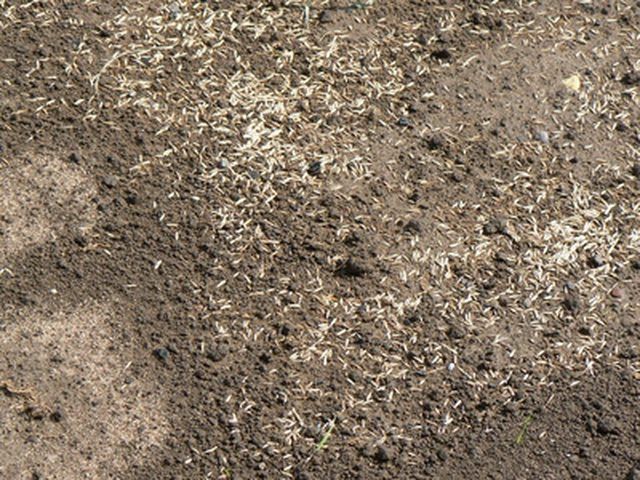Bulbs
Flower Basics
Flower Beds & Specialty Gardens
Flower Garden
Garden Furniture
Garden Gnomes
Garden Seeds
Garden Sheds
Garden Statues
Garden Tools & Supplies
Gardening Basics
Green & Organic
Groundcovers & Vines
Growing Annuals
Growing Basil
Growing Beans
Growing Berries
Growing Blueberries
Growing Cactus
Growing Corn
Growing Cotton
Growing Edibles
Growing Flowers
Growing Garlic
Growing Grapes
Growing Grass
Growing Herbs
Growing Jasmine
Growing Mint
Growing Mushrooms
Orchids
Growing Peanuts
Growing Perennials
Growing Plants
Growing Rosemary
Growing Roses
Growing Strawberries
Growing Sunflowers
Growing Thyme
Growing Tomatoes
Growing Tulips
Growing Vegetables
Herb Basics
Herb Garden
Indoor Growing
Landscaping Basics
Landscaping Patios
Landscaping Plants
Landscaping Shrubs
Landscaping Trees
Landscaping Walks & Pathways
Lawn Basics
Lawn Maintenance
Lawn Mowers
Lawn Ornaments
Lawn Planting
Lawn Tools
Outdoor Growing
Overall Landscape Planning
Pests, Weeds & Problems
Plant Basics
Rock Garden
Rose Garden
Shrubs
Soil
Specialty Gardens
Trees
Vegetable Garden
Yard Maintenance
Hydroseeding Vs. Planting Grass Seed
Hydroseeding Vs. Planting Grass Seed. Two popular ways to get a lush green lawn are hydroseeding and sowing grass seed.Hydroseeding is the faster of the two methods. It takes only two to three weeks to grow into a thick lawn. Hydroseed is a combination of water, seed, fertilizer, glue and green wood fiber mulch. Contractors spray the mixture over a...

Two popular ways to get a lush green lawn are hydroseeding and sowing grass seed.
Hydroseeding is the faster of the two methods. It takes only two to three weeks to grow into a thick lawn. Hydroseed is a combination of water, seed, fertilizer, glue and green wood fiber mulch. Contractors spray the mixture over a yard and the seed begins to germinate.
Sowing regular grass seed takes longer to produce grass, but it is less expensive than hydroseeding. You can do it yourself. With two days of work, the seed will be ready to begin sprouting.
Things You'll Need
Rototiller
pH test kit
Ground sulfur
Hydrated lime
Hydroseed
Rake
Soil
Sand
Compost
Fertilizer
Broadcast spreader
Grass seed
Mechanical or hand spreader
Sprinkler
Water
Hydroseed
Prepare the yard for hydroseeding. Get rid of debris and weeds to create a smooth surface. Run a rototiller over the soil to a depth of 4 to 6 inches to loosen it. Hydroseeding requires a rock-free, prepared surface.
Gather soil samples and test them with a pH test kit. Obtain one from a nursery or planting center. Follow the instructions on the box. Some cooperative extensions also have soil-testing services. Call the extension in your area to find out.
Amend the soil to make it more alkaline if it's too acidic. Add 4 ounces of hydrated lime per square yard in sandy soil to boost the pH by 1 point. Use 8 ounces per square yard in loamy soil; 12 ounces per square yard in clay; and 25 ounces per square yard in peat-type soil.
Make the dirt more acidic with ground rock sulfur. Reduce the pH by 1 point by combining 1.2 ounces of sulfur per square yard for sandy soil. Use 3.6 ounces per square yard in all other soil types. Mix it into the soil with the rototiller.
Hire a hydroseeding service. The contractor will spray the seeds over the yard, along with a starter fertilizer that contains a lot of phosphorus. This food encourages the roots to grow.
Keep hydroseeded lawns moist to promote germination. Water it twice a day to maintain moisture. Do not allow new seedlings to dry out.
Mow the lawn once it is 3 inches high. This will encourage thickness and growth.
Fertilize the lawn one month after the hydroseeding. Buy a food that is high in nitrogen. Follow the directions on the label.
Plant Seed
Clear away debris such as rocks, weeds and branches. Break up dirt clumps that are thicker than 1 inch.
Loosen the dirt to add air pockets. Till it to a depth of 4 to 6 inches. Level the planting area with top soil if necessary. Rake until smooth.
Add 1 inch each of compost and sand to increase fertility and improve drainage. Follow with a starter fertilizer high in phosphorus. Till all substances into the earth.
Spread grass seed with a mechanical or hand spreader, depending on the size of the yard. Make sure there is an even amount of seed. Rake it with the back of a metal rake to bury it 1/8 inch to 1/4 inch into the ground.
Water the grass seed at least twice daily for five to 10 minutes. Do this until the grass sprouts. Water the new lawn once daily for 15 to 30 minutes.
Tips & Warnings
If walking on the hydroseeded area is necessary, walk only on dry portions. Stay off the damp mulch mat.
Use an herbicide if needed for heavy weed problems. Apply it several weeks before sowing seed so it does not affect the grass.
Avoid trying to increase the pH of very acidic soil at one time. It will take a few applications to gradually change the pH.